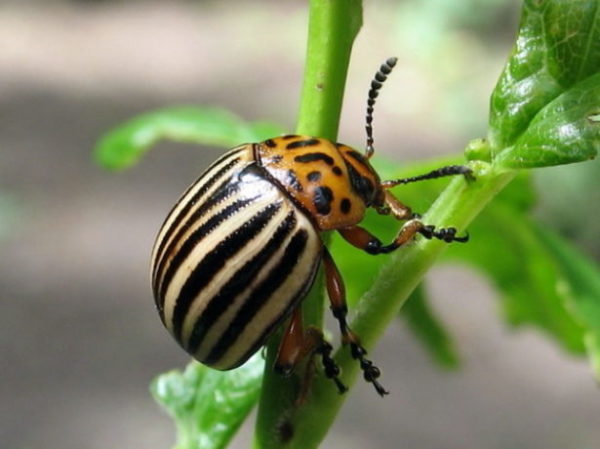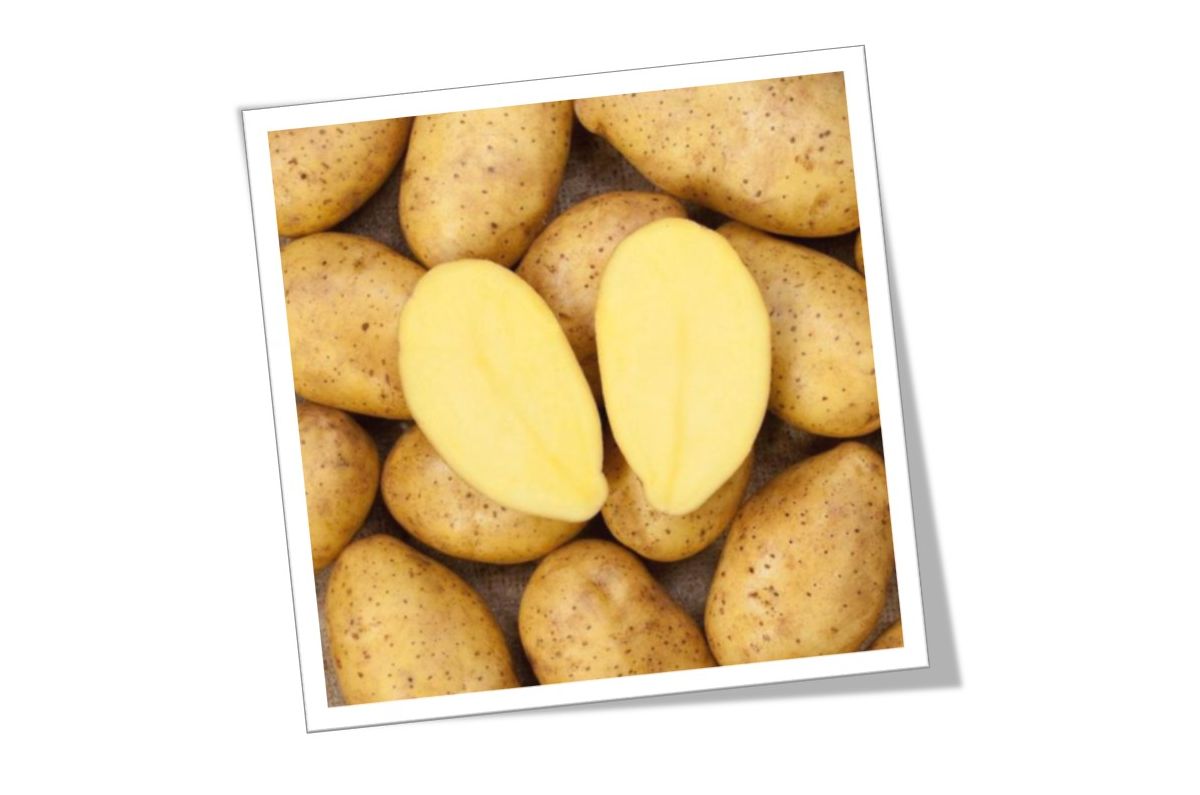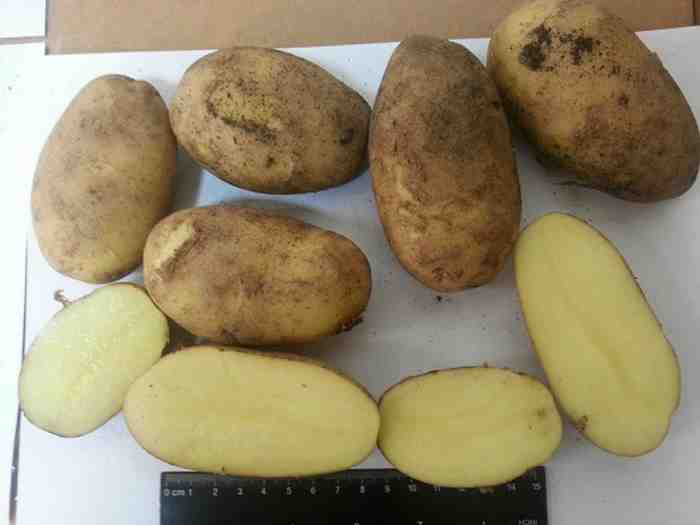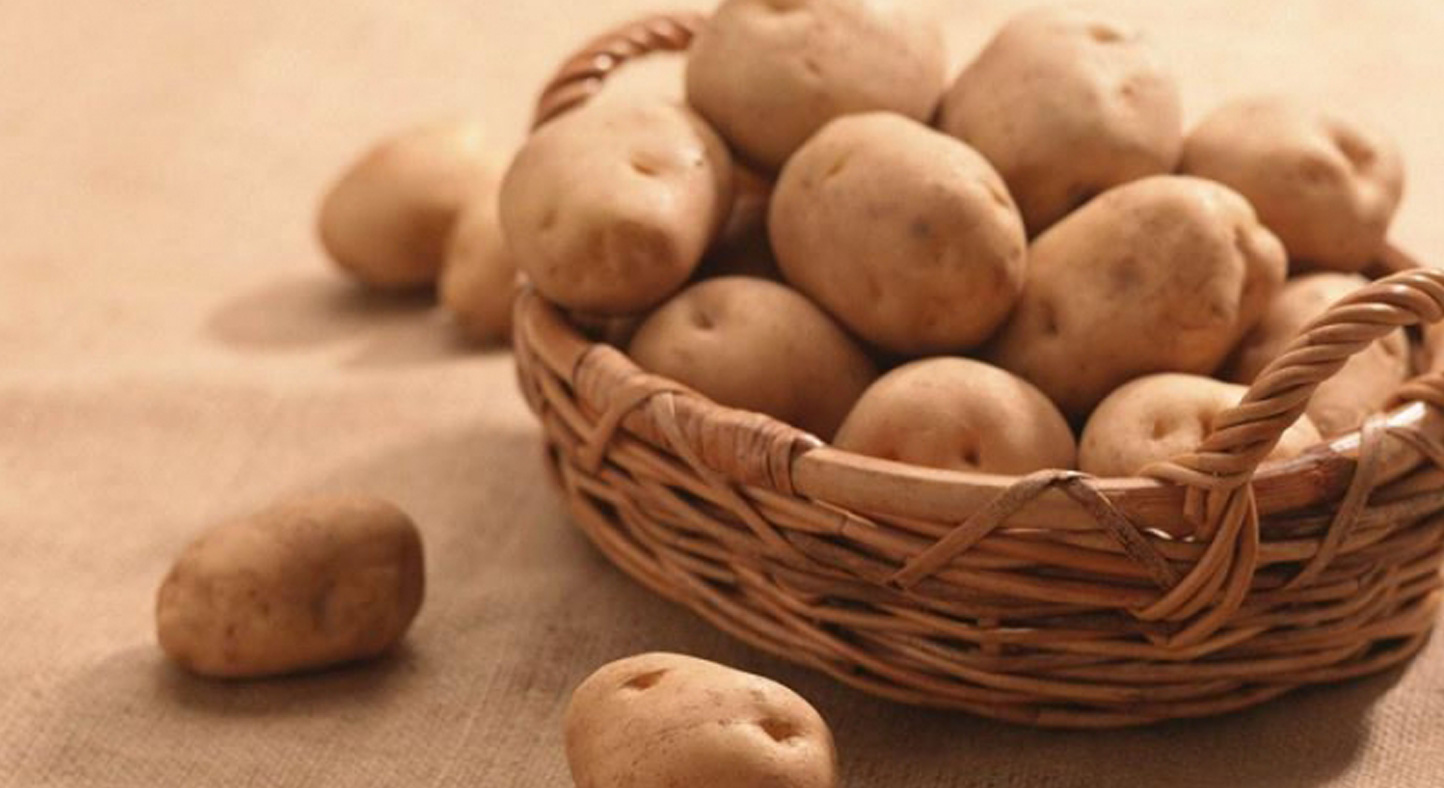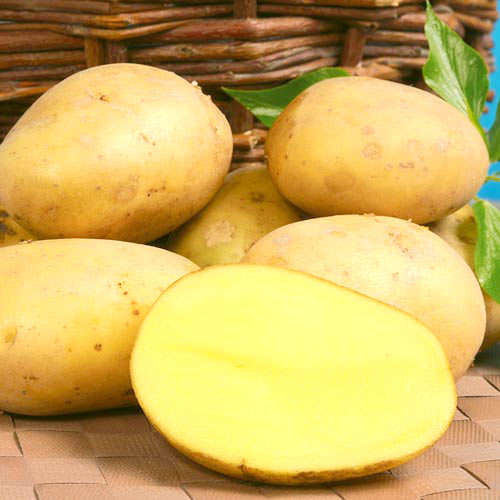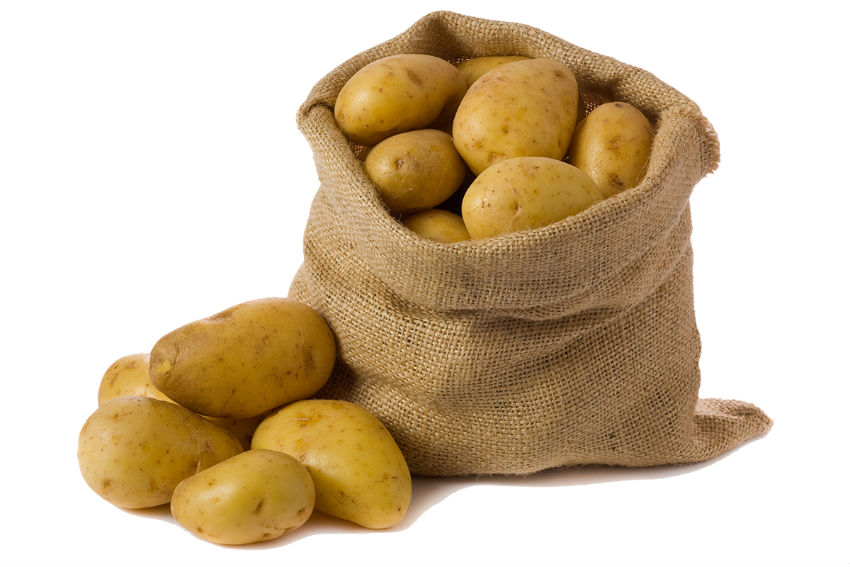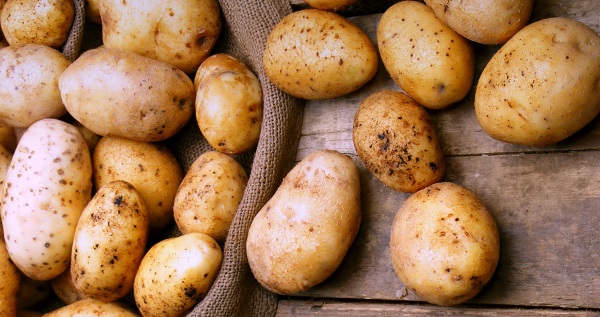Content:
The main crop grown by domestic gardeners is potatoes. It takes its rightful place in the diet. The standard of this type is recognized as the classic potato variety - Queen Elizabeth. The hybrid is selected from seven varieties of vegetables. The authorship is shared by the Vsevolozhsk breeding station and the Leningrad Research Institute "Belogorka". Included in the State Register in 1996. Recommended for breeding in the Volgo-Vyatka, North-West, North-Caucasian, Central, North and Far Eastern regions.
Description and characteristics of potatoes Elizabeth
Description
Elizabeth potatoes are a type of mid-early table variety. Elizabeth has a medium-sized erect bush with large bright green leaves. Compact nest with tubers 100-150 gr. It blooms sluggishly, with dropping of inflorescences and without the formation of seed fruits. Tubers are oval, light beige with a smooth surface and small eyes. The white and tender flesh of potatoes does not darken on contact with air. Contains 12 to 14% starch, proteins, vitamins and amino acids. The growing season lasts 70-90 days.
Characteristic
The features of this variety include:
- High yield (35-55 t / ha, sometimes up to 70 t / ha);
- Resistance to diseases (cancer, late blight, scab, viral infections);
- Susceptibility to macrosporiosis;
- Good keeping quality of tubers (up to 93%);
- Excellent taste;
- Easily tolerates temperature changes;
- Does not tolerate frost.
Agrotechnics
Soil preparation
The best for potatoes are sandy and loamy soils.
It is advisable to dig up the soil for Elizabeth potatoes twice: in autumn and spring. Fertilization is applied at the same time. The most suitable organic fertilizers are well-rotted manure and well-aged compost. Fertilizers are applied on loams in autumn, and on sandstones in spring. For previously fertilized soils, 1 bucket of fertilizer per 1 m2 is enough. For poor areas, the fertilizer dose is doubled. The best mineral fertilizer is deciduous tree ash. For 1 m2, it is enough to add 50-60 g. A local method of fertilizing is also used (directly into the hole when planting).
Preparation of planting material
It is better to select planting tubers in the fall. You need to take potatoes for planting from the best bushes, selecting healthy and undamaged root crops, the size of a chicken egg.
In the fall, it is advisable to green the planting material: hold the vegetables in the light until they turn green (such potatoes are reliable in storage, and rodents are indifferent to it).
In the spring, 2-4 weeks before planting, potatoes should be placed in a warm (12-15 degrees) and bright place for germination. Higher temperatures will lead to premature shoot growth, wilting and depletion of tubers. You can sprout potatoes in boxes, in perforated (with cut ventilation holes) plastic bags, or simply in bulk on the floor. Before planting, potatoes are treated against pests and diseases.
Landing
Potatoes are planted when the ground warms up to 8-10 degrees. You can determine the moisture suitable for planting in a simple way: the earth should not stick to the shovel and crumble when squeezed in your hand. The planting method depends on the structure and condition of the soil. If the soil is light, and the climate is hot and dry, then planting is required under a shovel in holes or furrows. In heavy and wet soils, planting is carried out using the method of cutting ridges, which raises the planting material above the soil level.
Potatoes are planted according to the scheme - 35 by 70 cm. The planting depth is different for different soils. The heavier the soil, the shallower the planting depth of the tubers. On clay soils, potatoes are deepened by 4-5 cm, on sandy and sandy loam (lightweight and loose) soils, planting is carried out at 10-12 cm depth.
Planting care
Weeding and loosening
It is systematically necessary to carry out weeding and loosening of the soil. Removing weeds and breaking up the surface crust (for oxygen access) improves plant growth.
Hilling
The first hilling of potatoes is carried out when the sprouts reach 8 cm in height, and the next two weeks after the first (the sprouts will already have 20-25 cm of growth). The minimum number of hilling is 2 times. A high and wide ridge is formed.
Watering
Elizaveta high-quality potatoes have increased watering requirements. Both excess and lack of moisture are unacceptable. You need to water on time and efficiently. The first watering is carried out immediately after planting. The second is after the first weeding. Further - according to the weather. When the heat is stable, it is watered every 5 days. At moderate temperatures - after 10 days. For this variety, drip irrigation is advisable - it will save the crop in dry summer.
Top dressing
When green shoots appear, the first feeding is carried out - it must be organic. Manure or bird droppings will do. To avoid plant burns, fertilizers are dissolved in water (in proportions of 1:15) and infused for 2 days. With this solution, the plants are poured under the root on wet soil. Each bush consumes 0.5-1 liter of top dressing. The second feeding is appropriate during flowering. You can add a mixture of ash (4 tbsp. L.) And 1.5 tsp. Per 1 running meter. sulfate or just sprinkle 1.5 tbsp. l. superphosphate.
Diseases and pests
Elizabeth's high immunity allows her to avoid diseases such as: cancer, golden cyst nematode, scab, but she is sensitive to macrosporia and late blight (with excess moisture). It is recommended to pickle the tubers or treat the bushes with preparations containing copper before planting.
In the fight against pests such as the Colorado potato beetle, aphids, thrips, and potato moths, chemical insecticides, which can be bought at specialized retail outlets, will help. To escape from the bear and the wireworm will help: disinfection of the soil with solutions or periodic crop rotation.
Advantages and disadvantages of the variety
Potatoes Elizabeth has the following positive properties:
- excellent taste of fruits (without wateriness and dryness);
- high yield (with full care);
- good keeping quality (without loss of presentation);
- resistance to degeneration;
- large root crops;
- disease resistance;
- excellent presentation.
The disadvantage is susceptibility to late blight and macrosporiosis.
This variety has long been loved by amateur gardeners, it is often grown for commercial purposes. Elizabeth's abilities: to provide amicable ripening and the absence of degeneration of the variety, allow her to be a queen among her own kind for many years.



